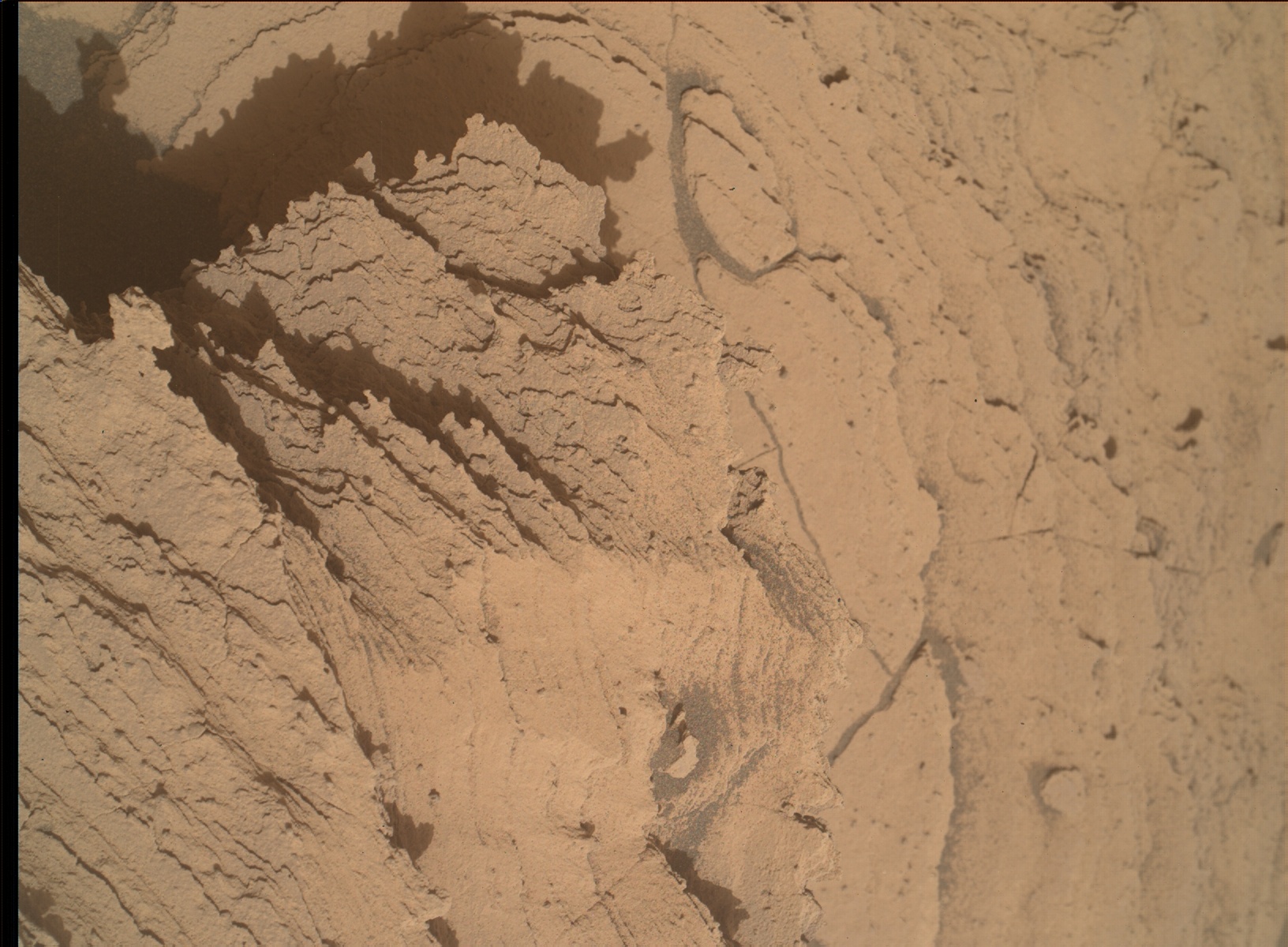3 min read

Earth planning date: Wednesday, December 13, 2023
With the colder months upon those of us in the Northern Hemisphere, some may be thinking about warmer times ahead, be it the return of spring, or a vacation to briefly thaw out from winter. The arrival of winter spells colder temperatures and fewer daylight hours, along with bouts of snow and ice for many. Slippery conditions make for more challenging commutes, not only on the roads but by foot as well. Many a bare hand has found itself placed in cold snow in an effort to stabilize feet flaring erratically in an often-futile effort to maintain balance on a sheet of ice. I can attest to this.
Curiosity found itself in a similar situation entering today’s planning. There was no sheet of ice. And while it is cold (though Curiosity is rapidly approaching spring equinox in the Southern Hemisphere, occurring almost exactly a month from now), the situation in today’s plan was one of questionable “footing.” The assessment of rover stability by Curiosity’s remarkable Rover Planners determined that outstretching the arm could result in the end of the arm dropping by up to ~5 cm. This could potentially place APXS in contact with nearby sand or result in a collision between MAHLI and the surface if it occurred during a sequence of close-up images. The decision was therefore made to forgo APXS on the target “Potluck Pass” (the darker toned rock in the center of today’s image, seemingly sitting atop other lighter toned rocks) and restrict MAHLI to images acquired at least 10 cm above the same target. Curiosity’s team were not going to risk a potential “hand in the snow.”
Curiosity started sol 4037 with observations by ChemCam on “North Guard” and “Texol,” and by Mastcam on “Crabtree Meadow” and North Guard. MAHLI then acquired images from a safe distance of Potluck Pass before the rover commenced a short (~11 m) drive while monitoring the subsurface with DAN. Near the end of the drive, Curiosity acquired the requisite images to support analyses by APXS and MAHLI in the 4039 plan. Environmental monitoring activities in the evening included dust devil monitoring and a MARDI image. The second sol of the plan included an autonomous ChemCam analysis of a target the rover deemed most worthy and two Navcam movies. Curiosity then completed a CheMin empty cell analysis and more DAN measurements to round out the two-sol plan. Shortly after dawn breaks on sol 4039, Curiosity will pick up where it left off, and hopefully find itself on firmer footing for a two-sol soliday weekend plan.
Written by Scott VanBommel, Planetary Scientist at Washington University







